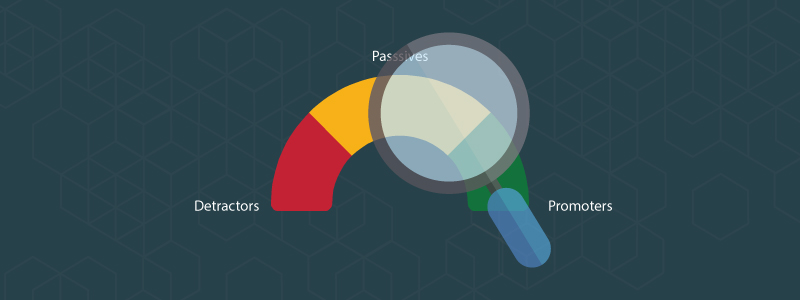Decoding NPS Myths
Decoding NPS® Myths

Net promoter approach is not “market research” but an operating management tool. Not my words, but those of the loyalty guru Frederick Reichheld when he originally propounded NPS® in his seminal 2003 HBR article “One Number You Need to Grow”. In my view, NPS® is a conversation with a viewpoint.
The net promoter system has been one of the most influential practices in modern business history. While it was first launched it 2003, it really gained traction in the past 5 years. One of the catalysts of adoption has been a technology that has enabled the ability to launch programs in real-time, both for measurement and action.
Some of the myths that are pervasive in relation to NPS® , that I would want to clarify:
Myth 1: NPS® should be practiced exactly as proposed in 15 years ago:
The ecosystem has dramatically changed in the last 15 years, so unless the original authors are planning to write a completely new playbook, I would advise you to try out sensible variations. Three things have dramatically changed in the past 10 years: Mobile phone, technology, and consumer participation. How has your NPS ® program evolved with this change? Of course, I am conscious and highly mindful that NPS ® is a proprietary trademark and any modifications, you will need to ensure due permissions. I am aware of brands that have moved to a 5-point scale (5 being promoter; 4 passive and 1-3 being detractor) to suit the mobile phone since they found an 11-point scale impractical on the phone. I don’t quite agree but I cannot find fault with the logic since the fat-finger syndrome was creating some anomalies or so they inferred in their tests.
Myth 2: NPS® is only for relationship assessments, not for touchpoints experience
Not true, in my assessment. In saying so, I am not really concerned with the original writing on the subject by Frederick Reichheld, the creator of NPS ®, since the ecosystem has dramatically changed in the last 10 years since the idea was launched. Consumers have intense emotions when experiencing brand touchpoints and it is important to have contextual conversations in real-time to understand the emotions better. And this question could well be an advocacy question. So, if you visited a bank branch, I find it perfectly valid to ask “Based on your recent visit to our branch, how likely are you to recommend ABC Bank to your friends and colleagues?”
Myth 3: External benchmarking of company NPS® is critical
Nothing is more damaging and dangerous for a team’s morale than blind benchmarking of Net Promoter Scores® with the competition. I can still understand if there is a common study with participation from all industry players – not that I still agree. The Net Promoter Score ® is based on a continuous improvement journey. Are you better this week than you were in the previous week? And the previous month? So, essentially your benchmark should be your previous period. You could of course with full validity, do internal comparisons and benchmarks. All things remaining equal among 1000 bank branches of the same company, can you create a leaderboard of branches based on their NPS® scores? Quite definitely – yes! And that is the very basis of improvement.
Myth 4: NPS® is just a measurement approach
Of course, NPS® is a very good measurement approach (has many critics and flaws, most of which are valid, but that is a topic for another day) but it is much more than that. But a sound implementation of NPS ® focuses on the culture change of the company to be an outstanding customer-centric organization. NPS® is the beginning of a one-to-one conversation with a viewpoint. The marketing world, drowned in campaigns, has created a poor image of customer conversations. But in a genuine manner, if brands use NPS® as the beginning of the conversation with strong use of technology, the NPS® approach can be a true operating management tool delivering agility to the organization.
So, there lies the basic premise of my pitch for NPS ®. Treat it as an organizational game-changer, not just another KPI. A great NPS® program should have the following components:
Alignment between brand goals and customer experience promise: There is a value at every price point and that match is critical. Both budget and luxury hotels can be great in customer experience – it is a fallacy to this say, low-cost airlines are not about customer experience. Consumers are wise enough to understand experience expectations and the price they pay. If you think they don’t, the problem lies in the mismatch of brand promise and customer experience being delivered.
A culture-changing common theme around customer experience across the organization: What you see on the notice boards, meeting rooms, manager huddles, off-sites, town halls is what defines your culture. If CX themes are not dominating these conversations, you are probably being superficial about the approach.
Scoreboards, leaderboards, internal benchmarks, KPIs: All of these have a strong role to play. So, managing starts with measuring, not just at the corporate level, but across customer journeys and touchpoints.
MAI Framework: Measure – Act – Improve
This is the bedrock of a continuous improvement journey. If your systems are not geared to solve problems in 2 hours, it is time for a redesign of your internal processes. The new consumer expects life in real-time. NPS® programs deliver the capability of agility, you still need to ensure that information agility gets translated to action agility and not get caught in organizational silos and legacy organization structures.


